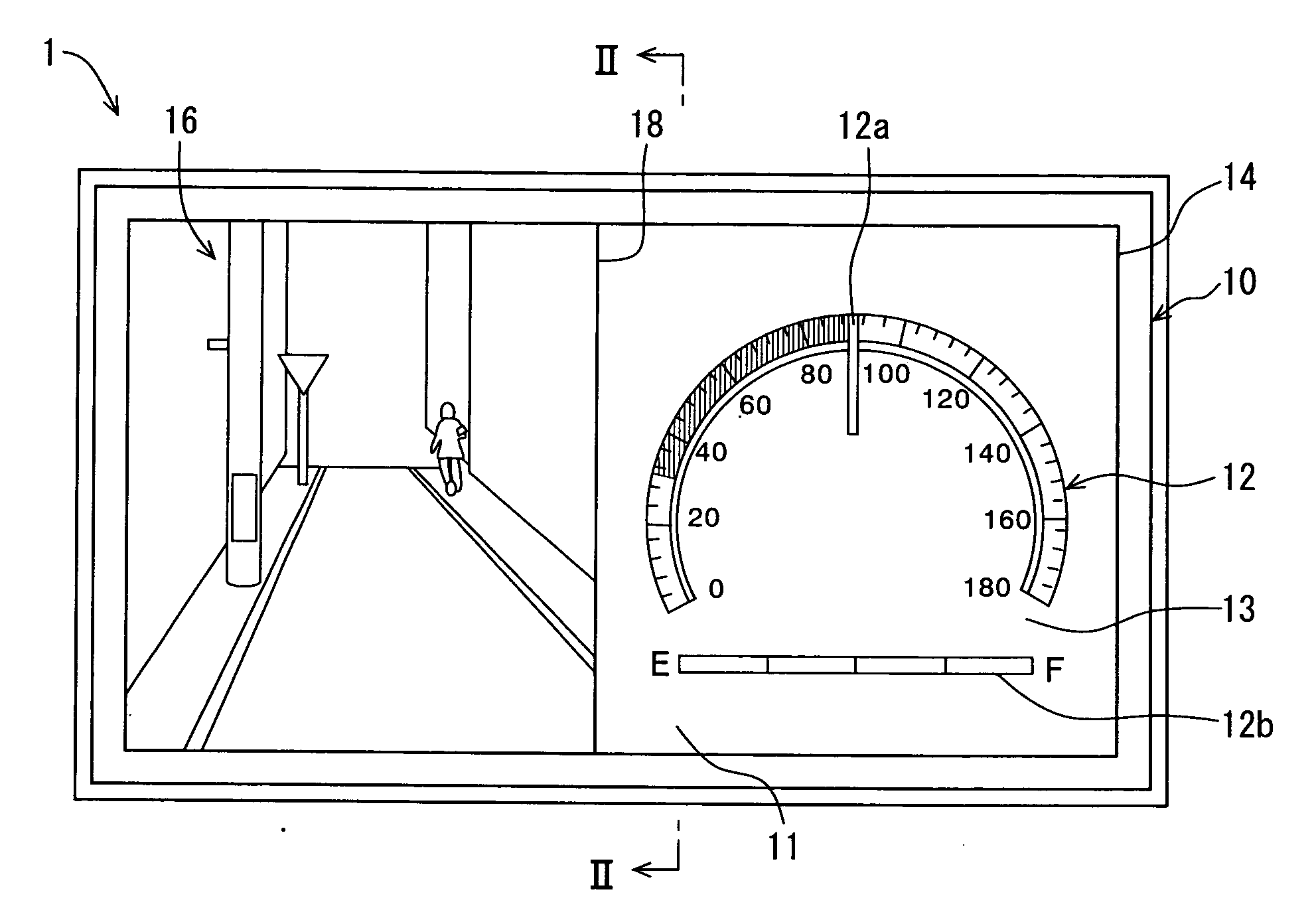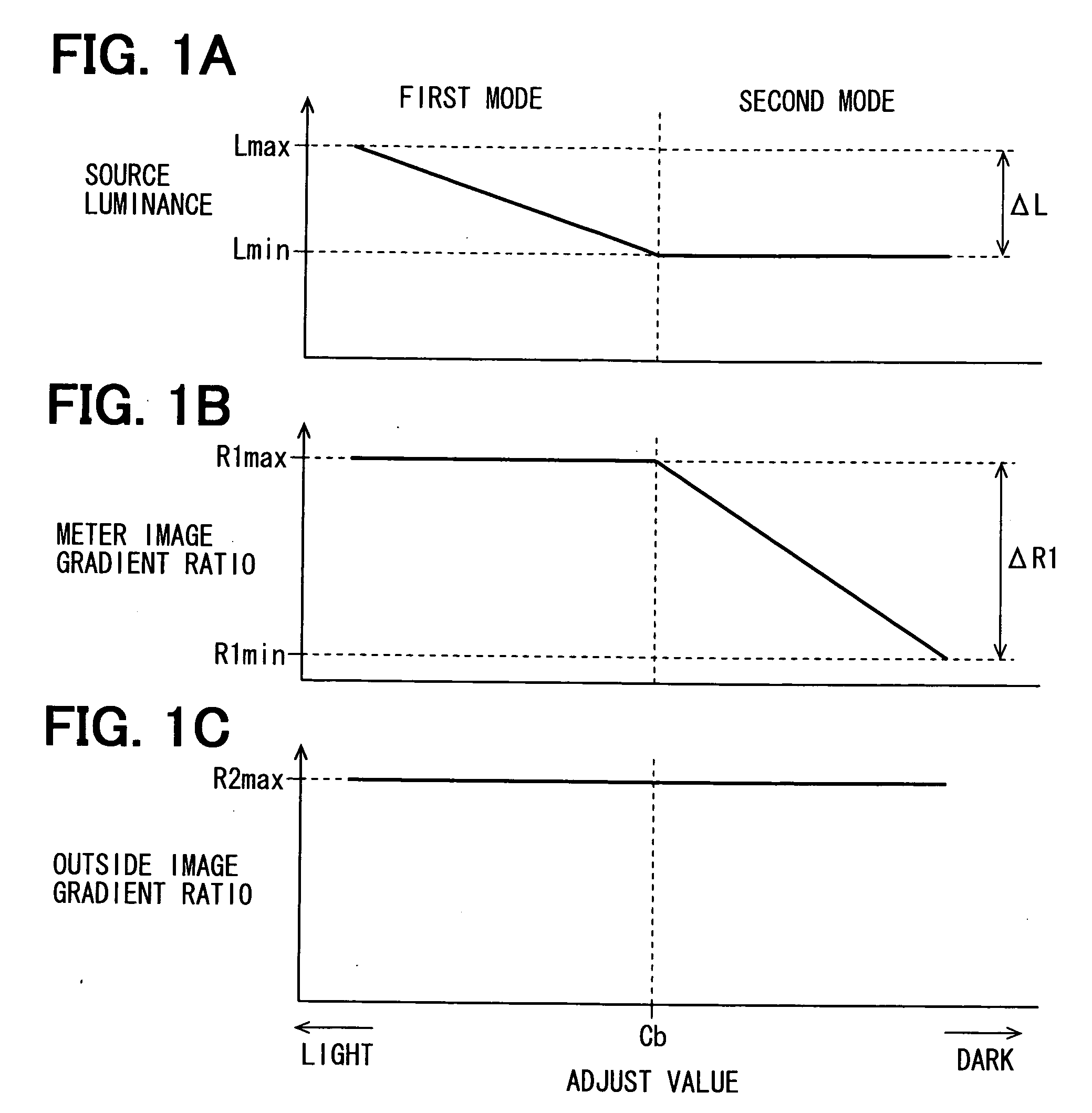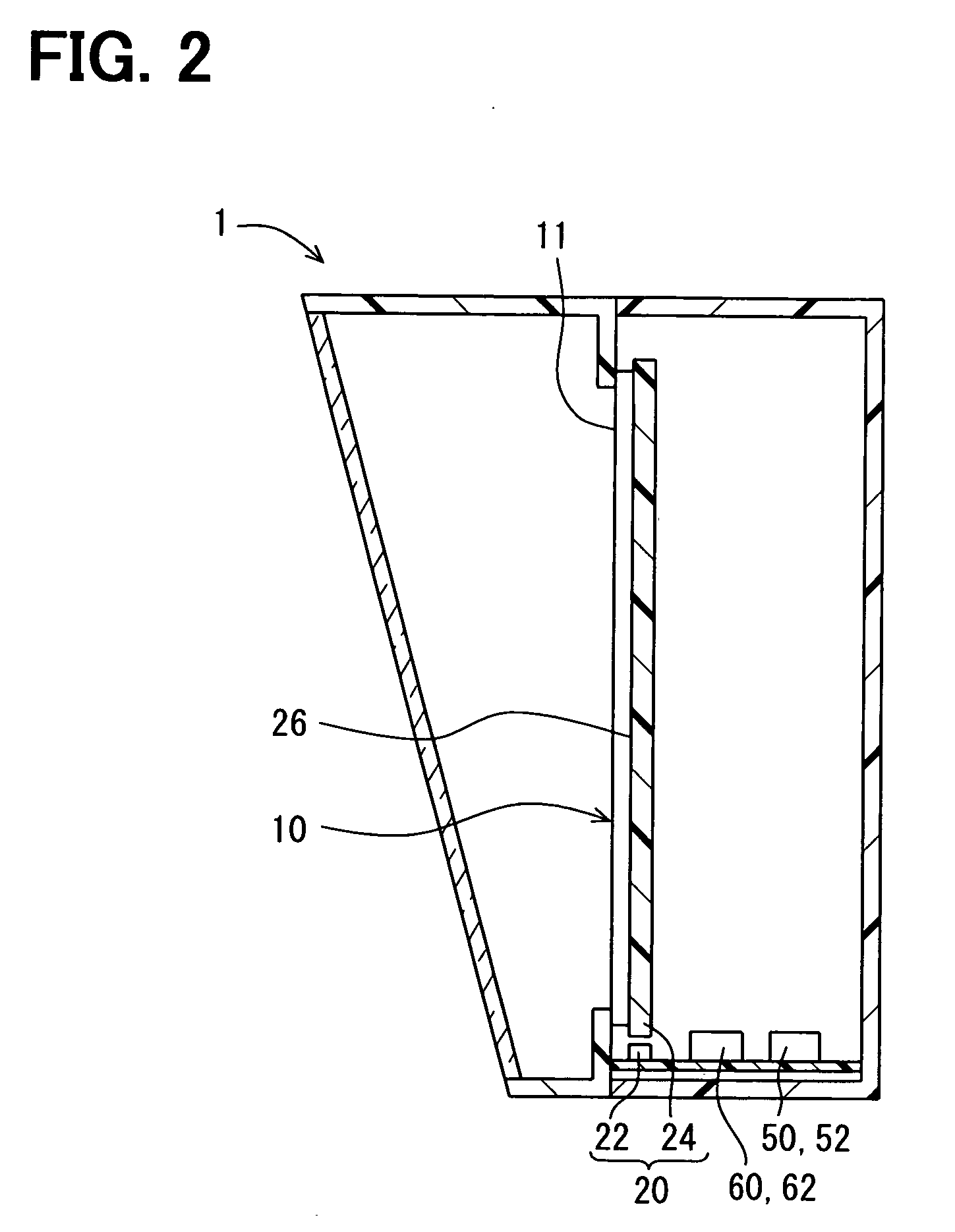Display device for vehicle
a technology for display devices and vehicles, applied in the direction of simultaneous indication of multiple variables, identification means, instruments, etc., can solve the problem that the fundamental objective of darkened images cannot be achieved, and achieve the effect of improving the visibility of images, reducing the luminance of images, and securing a certain amount of luminan
- Summary
- Abstract
- Description
- Claims
- Application Information
AI Technical Summary
Benefits of technology
Problems solved by technology
Method used
Image
Examples
first embodiment
[0038]FIGS. 2 and 3 show schematic configuration of the vehicle display device 1 according to a first embodiment of the invention. FIG. 4 shows an electric circuit configuration of the device 1.
[0039]As shown in FIGS. 2-4, the vehicle display device 1 is a device for functioning as a combination meter. The device 1 comprises an LCD 10, a liquid crystal display, a light source 20, an input portion 30, an image capturing portion 40, an LCD driver portion 50, and a display controller portion 60, etc.
[0040]The LCD 10 is a TFT penetration LCD. The LCD 10 is installed in front of the driver's seat in a manner that a screen 11 faces to a driver's seat in the vehicle. The LCD 10 is a dot-matrix type which has a plurality of pixels arranged in a matrix form. The LCD 10 displays a full color image on the screen 11 by driving these pixels, respectively. In this embodiment, one pixel of the LCD 10 contains three-colored sub-pixels R, G and B which have a red, a green and a blue color filter res...
second embodiment
[0097]The second embodiment of the present invention is a modified embodiment of the first embodiment. In the following description, differences from the first embodiment are mainly described.
[0098]As shown in FIG. 11 and FIG. 12, an LCD 210 of a vehicle display device 200 in the second embodiment is provided with a second pixel region 218 that displays an warning image 216 and a background image 217 by driving the composing pixels and is located below the first pixel region 14. In FIG. 11, the two-dash line virtually shows a boundary between the first pixel region 14 and the second pixel region 218.
[0099]Here, the warning image 216 is an image which warns of an abnormality in order to call attention to the abnormality occurred on the vehicle. Therefore, the device displays the warning image 216 at the specific time at which an abnormality occurs as shown in FIG. 11, but, does not seemingly display the warning image 216 at the regular time as shown in FIG. 13. Especially in this emb...
PUM
 Login to View More
Login to View More Abstract
Description
Claims
Application Information
 Login to View More
Login to View More - R&D
- Intellectual Property
- Life Sciences
- Materials
- Tech Scout
- Unparalleled Data Quality
- Higher Quality Content
- 60% Fewer Hallucinations
Browse by: Latest US Patents, China's latest patents, Technical Efficacy Thesaurus, Application Domain, Technology Topic, Popular Technical Reports.
© 2025 PatSnap. All rights reserved.Legal|Privacy policy|Modern Slavery Act Transparency Statement|Sitemap|About US| Contact US: help@patsnap.com



